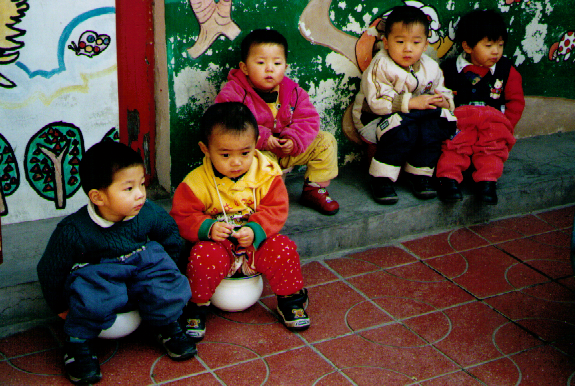30 cents a crap. That is just about what we are paying each time Petra soils herself here in the Dominican Republic. 30 cents six times each day equals two USD of travel funds shat upon. That is $14 a week, $56 a month. Our budget can withstand this onslaught — Petra gets $10 a [...]
30 cents a crap. That is just about what we are paying each time Petra soils herself here in the Dominican Republic. 30 cents six times each day equals two USD of travel funds shat upon. That is $14 a week, $56 a month. Our budget can withstand this onslaught — Petra gets $10 a day like everybody else — but it doesn’t have to.
We began a program called elimination communication with Petra right after she was born. We tried to turn her into a diaper free baby by placing her bare bottom over a sick, tub, toilet, field, beach, dirtpile at specified times in the day so that she could do her duty outside of her diaper — which would subvert the errs of toddler potty training, keep our daughter free from soiling herself, as well as save use thousands of dollars.

Petra was doing very well for the first month or two — she would crap and pee almost on command — but this regimen soon faltered. Our circumstances during the latter three months of our travels in the USA did not make for good diaper freeing. We were bouncing between hotels, the homes of friends, and our parent’s homes as we traveled slowly from Arizona back to Maine. Neither Chaya nor I felt comfortable whipping out our daughter’s bare bottom and letting her squirt to her heart’s delight all over the sink of a friend’s home.

Diapers in the Dominican Republic
Elimination communication also seems to be more of a practice for the parents rather than the child. Babies come virtually potty trained, they just need parents dedicated enough to take them to the bathroom a couple dozen times a day — they need both parents giving them full time attention 24 hours a day. The diaper free baby is one who has two very focused parents.

Chaya shopping for diapers in the Dominican Republic. These diapers cost over $10 for a couple dozen.
I dropped the ball on Petra’s diaper free baby routine. I bailed out of Maine and went to work in Arizona. When my family rejoined me in the Southwest, I was busy doing archaeology surveys all day long and then working on VagabondJourney.com all night. It is difficult for two parents to be as attentive to their baby as it takes to free them from diapers — especially when they are working and traveling all at the same time.
Sometimes when life becomes too full of variables, you need to search out expedient means. The diaper is an expedient way of dealing with a baby’s elimination routine. Most parents in the West use diapers without any notion of an alternative. This is suitable for the lifestyles of most parents in this part of the world.
If Chaya and I lived in the backwoods of Maine all year round, Petra would probably be 90% without diapers now.
But we don’t live in the backwoods of Maine. Rather, we travel, we are not always fully in control of our circumstances, and I work long hours. For the latter three months of our time in the USA, elimination communication with Petra was not really a viable option.
Though now it is.

We are in a beach town of the Dominican Republic. Both Chaya and I are with Petra all day long. The only work I have is on the website, which is run from a little computer that sits in the same room within ten feet of Petra whenever we are in the apartment. The circumstances are now right for Petra to eliminate more freely outside of diapers.
So we bring her to the sink at various intervals throughout the day, and she goes as she always did. She is still has the diaper free baby in her.
When we go out we put her in a diaper. The practice of elimination communication does not seem to be one that necessitates all out extremes — when it is appropriate for Petra to where a diaper, she wears one; but, when the circumstances are right, we diaper free her as often as we can. The important thing is that Petra does not loose control of her bladder or bowels, that she is always somewhat conscious of what is going on with her body.
We are paying 30 cents a crap. Each diaper that we save is a diaper that could be used another day.
Read more about diaper free baby and traveling
Photos of Chinese babies by my friend, Deb Goss in Florida or Maine or wherever she is
SUPPORT
The only way I can continue my travels and publishing this blog is by generous contributions from readers. If you can, please subscribe for just $5 per month:NEWSLETTER
About the Author: VBJ
I am the founder and editor of Vagabond Journey. I’ve been traveling the world since 1999, through 91 countries. I am the author of the book, Ghost Cities of China and have written for The Guardian, Forbes, Bloomberg, The Diplomat, the South China Morning Post, and other publications. VBJ has written 3706 posts on Vagabond Journey. Contact the author.
VBJ is currently in: New York City
-
February 15, 2010, 10:55 am
LinkNice. I am all about having a free range baby. 😉 My wife and I have discussed doing this with our children, when they come, as well as teaching them sign language.
Next post: Average Wage in Dominican Republic
Previous post: Where Not to Exit Europe if Overstayed Visa

